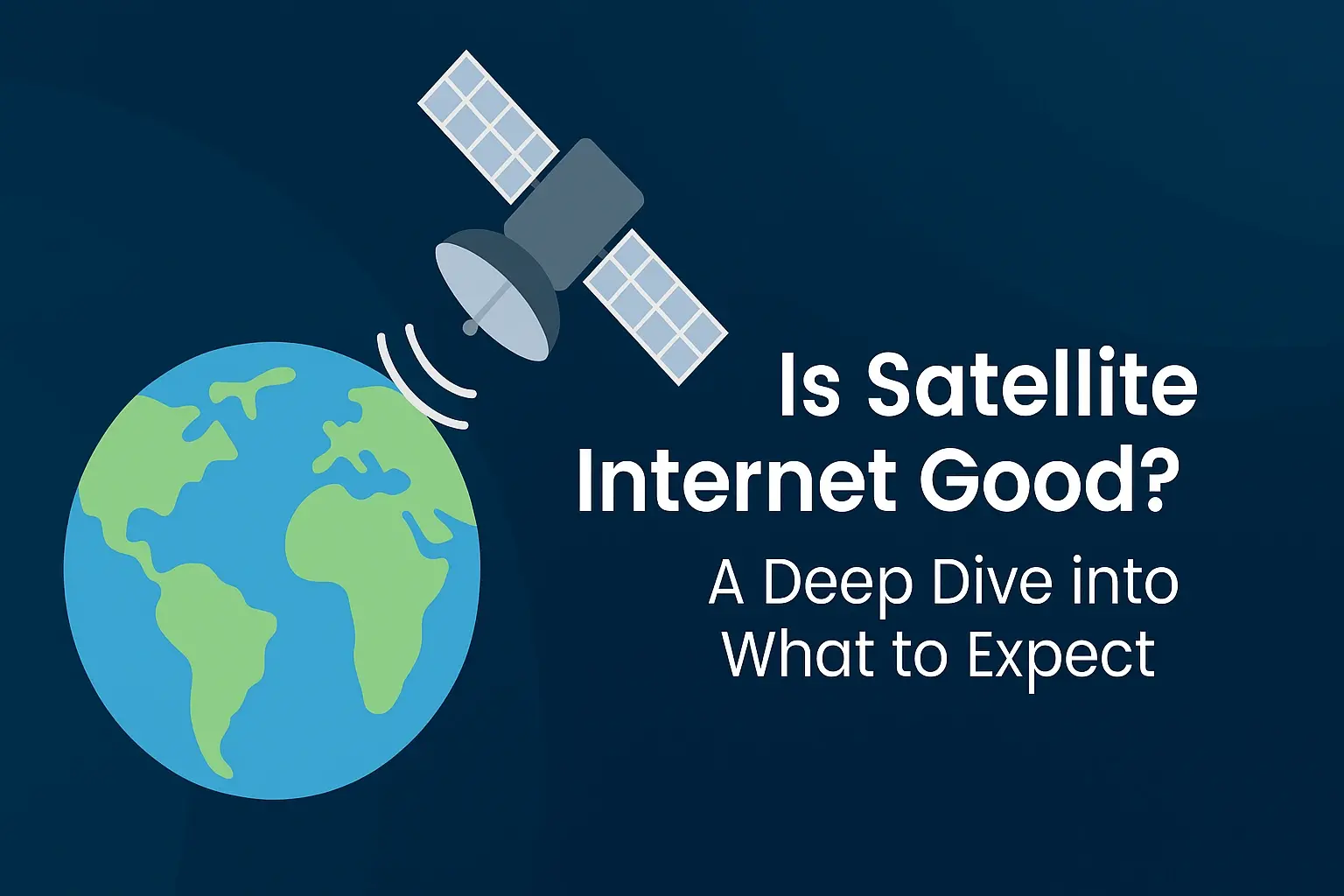Is Satellite Internet Good? A Deep Dive into What to Expect

Satellite internet has seen remarkable advancements in speed, reliability, and reach, making it a practical solution for millions in rural, remote, and underserved areas—but limitations such as higher latency, weather sensitivity, and cost persist compared to fiber and cable options. This comprehensive, current review explores what users should expect from satellite internet in 2025, details the pros and cons, and compares it with terrestrial broadband for prospective subscribers.
What Is Satellite Internet?
Satellite internet uses orbiting satellites to deliver broadband anywhere there’s a clear view of the sky. It shines in locations where cable, fiber, or DSL are unavailable, such as rural farms, mountain cabins, off-grid homes, and disaster-stricken areas. Modern satellite services now feature Low Earth Orbit (LEO) technology, slashing latency and boosting speeds compared to classic geostationary satellites.?
Technology Types
LEO (Low Earth Orbit): Fast, modern, and lower latency (e.g., Starlink).
GEO (Geostationary): Traditional, higher latency, older (e.g., HughesNet, Viasat).
Satellite Internet Pros
Almost universal coverage: Reaches places other broadband methods cannot.?
Ease of installation: Typically requires a dish and modem, often DIY-capable.?
Disaster resilience: Recovers quickly after storms or natural disasters due to the lack of physical cables.?
Speeds now rival entry-level fiber in select areas: Starlink routinely delivers 100–200 Mbps, with peaks over 325 Mbps in recent tests.?
LEO satellites deliver lower latency: Average latency for Starlink is now 20–40 ms, compared to 500 ms or higher for legacy providers.?
Satellite Internet Cons
Higher monthly costs: Typical prices range $80–$120/month, with hardware fees extra.?
Weather sensitivity: Service degrades during heavy rain, snow, or dense cloud cover.?
Latency remains higher than fiber or cable: Even with Starlink’s progress, gaming and teleconferencing can be affected.?
Data caps on traditional providers: HughesNet and Viasat often throttle speeds or charge extra after a limit.?
Clear sky required: Trees, roofs, or obstructions can block the signal.?
Upfront equipment costs: A New satellite dish and modem can cost $200–$600, depending on provider and installation method.
Real-World Speeds, Latency & Reliability
Starlink Performance (2022–2025)
Download speeds: Frequently 140–200 Mbps, maximums recorded at 325 Mbps.?
Upload speeds: Typically 10–40 Mbps, with recent tests showing up to 64 Mbps.?
Latency: Tested as low as 10–20 ms, average 29–38 ms in 2024–2025.?
Consistency: Service now matches fiber-like reliability for most users, with outages infrequent and mostly weather-related.?
HughesNet & Viasat (2025)
Download speeds: Average 25–100 Mbps.?
Upload speeds: Usually 3–10 Mbps.
Latency: Often 450–700+ ms, making real-time activities challenging.?
Data cap: 15–100GB/month, after which speeds may throttle to 1–3 Mbps.
Satellite Internet Compared: Broadband Alternatives
| Feature | Satellite (Starlink) | Fiber | Cable | Fixed Wireless |
|---|---|---|---|---|
| Speed | 50–200 Mbps | Up to 1 Gbps+ | 50–500 Mbps | 10–150 Mbps |
| Latency | 20–60 ms | <20 ms | 15–30 ms | 30–80 ms |
| Data Caps | Usually unlimited | Unlimited | Unlimited | Some plans capped |
| Availability | Universal (clear sky) | Urban/Suburban | Urban/Suburban | Some rural/urban |
| Weather Impact | Significant | Minimal | Minimal | Moderate |
| Cost (monthly) | $80–$120 | $40–$80 | $30–$80 | $40–$80 |
| Ideal For | Rural/remote/emergency | Streaming/gaming/WFH | General home use | Rural/backup |
User Reviews: What Are Real People Saying?
Starlink: Improved speeds and reliability year-over-year. Most customers stream 4K video, game online, and work from home with few issues aside from occasional weather disruptions. 74% recommend to friends/family, with 80% overall satisfaction.?
HughesNet and Viasat: Mixed reviews, average rating of 2.8/5, some complaints about slow speed after the cap, and patchy reliability.?
Community feedback: Users appreciate satellite as a lifeline in rural/remote areas, but still prefer fiber or cable where available.
Cost, Hardware & Installation
Starlink hardware: $599 upfront for the standard kit, $199 for professional roof installation if DIY is not desired.?
HughesNet/Viasat hardware: $200–$300 upfront, or rental options with long-term contracts.?
Monthly fees: Range $80–$120 for typical home plans, with business packages more expensive.?
Contracts: Starlink offers no contract, cancel anytime, while legacy providers may require 2-year agreements.
When Is Satellite Internet a Good Choice?
Best for: Farms, cabins, off-grid homes, disaster zones, RVs, boats, rural schools, and backup internet for remote areas.?
Not ideal for: Hardcore competitive gamers, heavy video conferencing, businesses needing guaranteed uptime, and anyone with reliable fiber/cable access.
Satellite Internet Market Trends (2025+)
Global expansion: The market is projected to double by 2032 due to continuing LEO rollouts, improving speeds/latency, and broader adoption in underserved markets.?
Final Verdict: Is Satellite Internet Good in 2025?
Satellite internet is now a genuinely viable choice for rural and remote users seeking reliable broadband, especially via LEO providers like Starlink. Performance rivals and sometimes exceeds older cable or DSL networks, but higher cost, weather impacts, and latency remain challenges. For those unable to get fiber or dependable cable, satellite now offers real streaming, gaming, and work-from-home functionality, with continued improvements on the horizon.
null